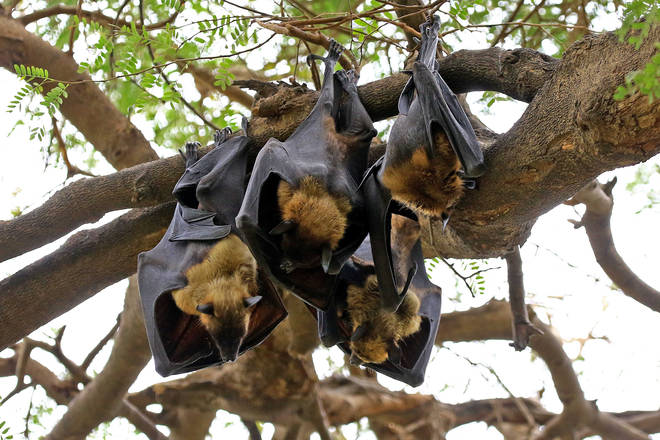Related to the cryptocurrency craze, NFT stands for nonfungible token.
By Austa Somvichian-Clausen | March 24, 2021
Story at a glance
Like the signature on an original painting, owning an NFT ensures the new owner exclusive rights to a piece of digital property.
Most NFTs utilize the blockchain Ethereum, whose energy consumption has come under scrutiny as of late.
According to estimates, the annual energy usage of Ethereum is enough to rival that of small countries like Bahrain.
This Monday, Twitter co-founder Jack Dorsey combined past and future when he sold his first-ever tweet as an NFT, or nonfungible token, for $2.9 million. A simple introduction to what grew to be one of the largest social media platforms in the world, the tweet read: “just setting up my twttr.
That small piece of social media history is now owned by Sina Estavi, the chief executive officer of Malaysian blockchain service Bridge Oracle. Estavi, who likened his new internet real estate to Leonardo da Vinci’s Mona Lisa, is just one of the growing number of savvy investors getting involved in the confusing world of NFTs. In fact, the market for NFTs is already being valued at $1 billion.
NFTs draw upon the same blockchain technology that digital currencies rely upon, such as Bitcoin and Ethereum, to both ascribe ownership to the digital works and authenticate purchases. So, while we can all still see, read, embed and screenshot Dorsey’s tweet, Estavi has digital proof of ownership over it.
For digital artists, the newly emerging world of NFTs is a fever dream — a new, highly lucrative way for them to monetize their works. Even lesser known digital artists have been cashing in on thousands of dollars thanks to the quick-paced sales and current high demand for NFTs, and a bonus of the model allows ownership to be extended to resales of that token. That means artists continue making money, even as the NFT is resold multiple times.
Sound too good to be true? That’s yet to be seen, and many financial advisors are cautioning their clients against hitting the gas on NFTs just yet. Besides the mystique of the NFT market, rumors have also been swirling about their environmental impact, throwing even more confusion into the mix.
Earth pays a hefty price for the art
While NFTs hold promise for artists and investors alike, its critics say that the blockchain mining that makes them possible is perhaps one of the most direct examples of cashing in on the pollution of this planet.
The problem is that many creators, especially those who jumped on the NFT bandwagon in its earliest stages, are separated from that energy-consumption process. Many do not realize that creating the NFTs they are now profiting from required an enormous amount of raw computing power. Ethereum mining consumes about 26.5 terawatt-hours of electricity a year. To put that into perspective — that is nearly as much energy used annually by the entire country of Ireland.
Theoretically, mining energy could come from renewable sources in the future. For now, though, the major marketplaces for NFT art such as MakersPlace, Nifty Gateway and SuperRare conduct their sales through Ethereum. Ethereum’s developers have planned a shift to a less carbon-intensive form of security, called proof-of-stake, via a blueprint called Ethereum 2.0. But this has been in the works for years, and while they have promised a launch of the new system in 2022, nothing is certain.
“That would essentially mean that Ethereum’s electricity consumption will literally over a day or overnight drop to almost zero,” Michel Rauchs, a research affiliate at the Cambridge Centre for Alternative Finance, told The Verge.
When picturing how the world of blockchain works, many overlook the physical, real world aspects of the practice of “mining.” Since crypto first began to boom, miners have taken over basements and warehouses, filling these vast spaces with air conditioning and endless rows of high powered computers running software.
These cryptocurrency operations have sprung up anywhere from Texas to Iraq to Inner Mongolia, and even smaller mining operations can overload local grids. Some mining hotspots that have gained popularity for cheap hydropower have even had to ban new operations over concern that the intense energy usage needed for mining would push neighboring energy users to dirtier energy sources.
Fortunately, those concerned about the environmental impact of NFTs are already working on a number of solutions to the issue. While there are some buyers against the idea of purchasing works not backed by Ethereum, others are looking into the possibilities associated with private blockchains, which allow them to sidestep some of the issues with cryptocurrencies. For environmentally conscious digital creators, users on platforms like Github have already begun creating guides on creating more eco-friendly NFTs.
“I realized that the issue of sustainable platforms not only needs to be part of the crypto conversation, it is the conversation — into which systems, functional applications, and power structures are all enmeshed,” said artist Memo Akten in a recent interview with Flash. A digital creator himself, Akten revealed through his own research that the carbon footprint of an average single-edition NFT is equivalent to driving a car for 1,000 kilometers, and for higher editions, the figures are equivalent to dozens of transatlantic flights.
“Digital artists absolutely should be able to earn a living making the work they love. But this should not involve the immense footprint it does presently nor the current lack of transparency. New businesses and platforms must align with the values we are hoping to carry into the future.”




















